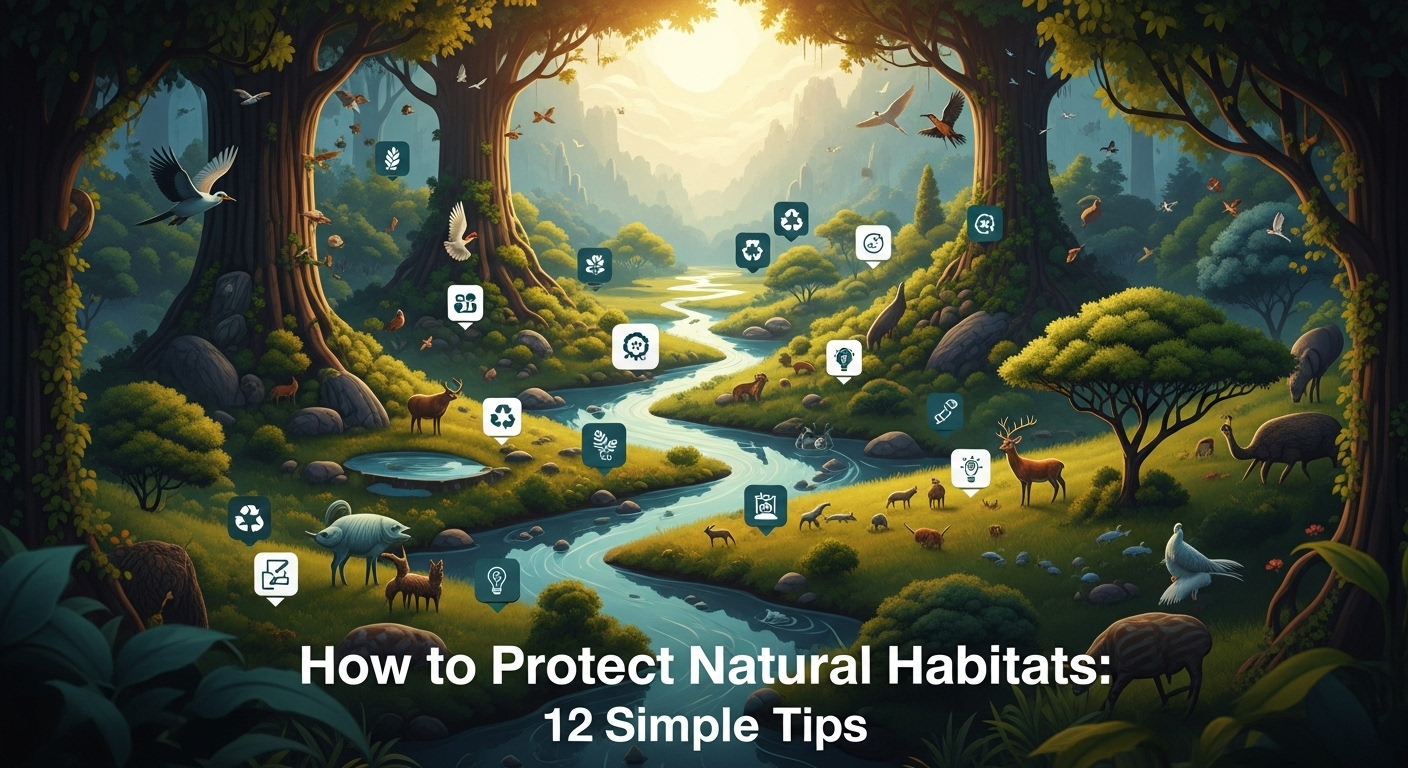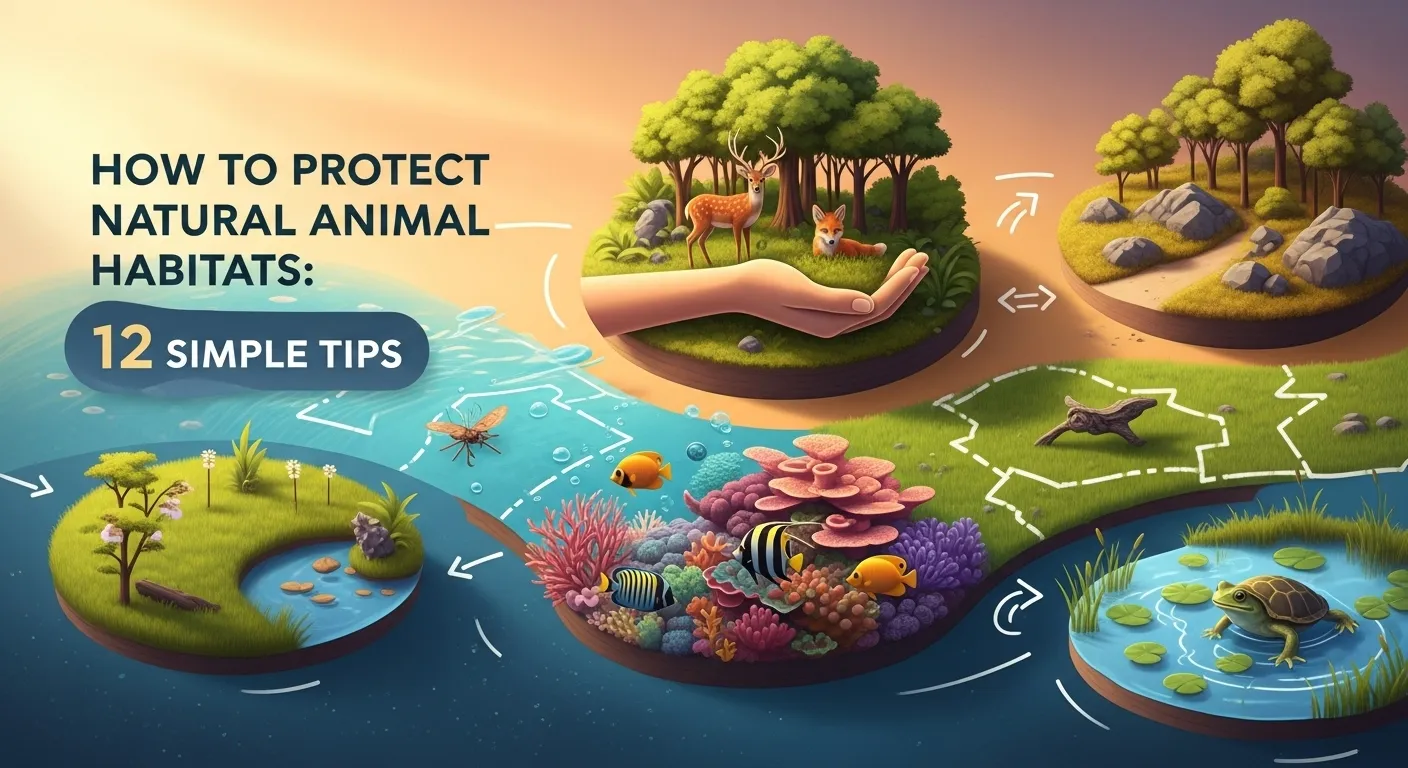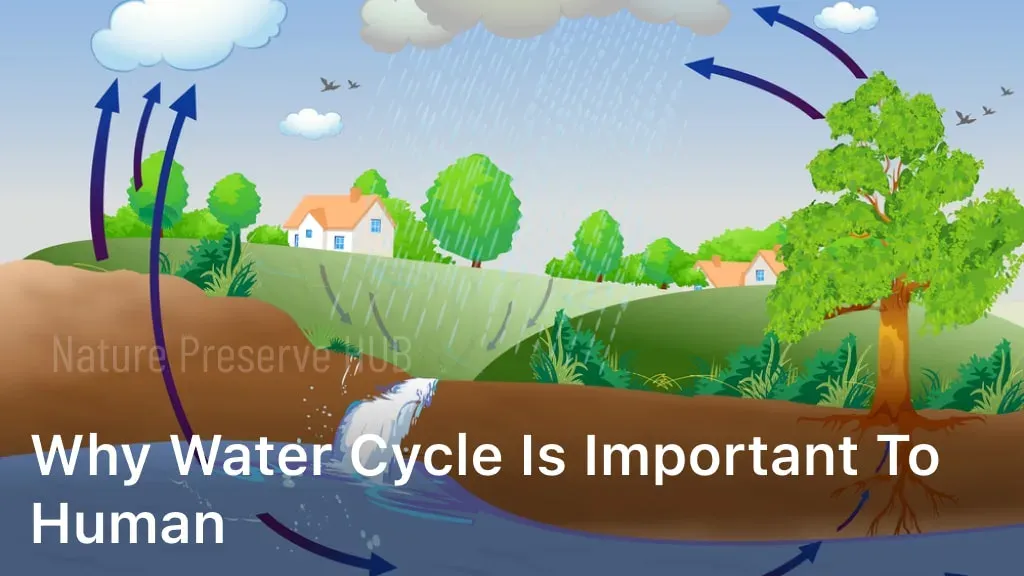How to Protect Natural Animal Habitats: 12 Simple Tips
Protecting wildlife is no longer a distant ideal; it’s a daily practice. If you’ve ever wondered how to protect natural animal habitats in a way that actually makes a difference—at home, in your community, and beyond—this guide breaks it down into practical, enjoyable actions. You’ll learn how small choices add up to big wins for biodiversity, from planting native species to advocating for habitat-friendly policies and supporting ethical travel. Here are 12 simple, science-backed tips that fit into real life and create lasting impact.
Table of Contents
ToggleWhy Habitat Protection Matters
Healthy habitats are the stage on which all wildlife thrives. Forests, wetlands, coral reefs, grasslands, and deserts each host complex webs of life. When habitats fragment or degrade, species lose food, shelter, migration corridors, and breeding grounds. The result? Populations decline, ecosystems unravel, and human communities lose nature’s life-support systems.
Scientists agree that the biggest drivers of biodiversity loss today include land-use change, overexploitation, invasive species, pollution, and climate change. While these drivers are global, everyday decisions—what we buy, how we vote, where we travel, and how we garden—directly influence them. Habitat protection isn’t abstract; it’s practical, local, and cumulative.
It’s also smart strategy. Protecting habitats safeguards ecosystem services we rely on: crop pollination, clean water, flood control, carbon storage, and disease regulation. Think of intact habitats as nature’s infrastructure—resilient, efficient, and irreplaceable. Investing your effort in conservation yields outsized returns for wildlife and people alike.
Below is a quick reference showing the main threats, what they mean in daily life, and where your actions can move the needle.
Driver | What it means | Everyday connection | Action lever
- Land/sea use change | Natural areas converted to farms, cities, roads | Food choices, housing, landscaping | Eat lower on the food chain; support smart growth; plant native
- Overexploitation | Unsustainable hunting, fishing, logging | Seafood, wood furniture/paper, fashion | Choose certified products; reduce demand
- Invasive species | Non-native species outcompete natives | Garden plants, pets, bait | Plant native; never release pets; clean gear
- Pollution | Chemicals, plastics, noise/light disrupt habitats | Household products, trash, lighting | Buy low-tox; reduce plastic; use wildlife-friendly lights
- Climate change | Shifts ranges, phenology, and habitat viability | Energy, travel, heating/cooling | Electrify, conserve energy, vote for climate action
Actions You Can Take at Home and Online
Start where you are. Homes, balconies, and backyards can become micro-habitats that support pollinators, birds, and beneficial insects. A single window box of native flowers can provide nectar; a small water source can help migrating birds; and pesticide-free soil invites life below ground. You don’t need a large space to create meaningful habitat.
Online, your influence scales. Sharing local habitat maps, supporting credible conservation nonprofits, and amplifying citizen science results all help accelerate real-world conservation. Your voice, clicks, and contributions can steer attention and funds toward habitat protection.
Remember: consistency wins. Turning habits into routine—refilling a bird bath, composting, switching to eco-friendly products—compounds into long-term benefits.
1) Shrink Your Footprint Where It Counts
Reducing your resource use is one of the most direct ways to lessen pressure on habitats. Focus on big-impact actions: eat more plant-based meals, cut food waste, and choose seasonal, locally grown produce when possible. Lowering meat intake eases land-use pressure; reducing waste lessens landfill expansion; seasonal choices reduce long-distance transport impacts.
At home, optimize energy use. Insulate, seal drafts, and switch to high-efficiency heating and cooling. Electrify when feasible—induction cooktops, heat pumps, and EVs all reduce emissions that drive climate-related habitat shifts. Pair with renewable energy subscriptions or rooftop solar where possible.
2) Choose Wildlife-Safe Products
What you buy shapes landscapes. Prefer wood and paper certified by credible standards (e.g., FSC), seafood from sustainable fisheries, and clothing made with lower-impact fibers and dyes. Avoid products tied to deforestation or destructive extraction—look beyond green slogans to real certifications and transparency.
Household chemicals matter, too. Skip broad-spectrum pesticides and herbicides; they harm pollinators and soil life. Use integrated pest management and spot treatments instead. Choose low-tox cleaners and biodegradable soaps, protecting waterways that downstream species rely on.
3) Plant Native, Even on a Balcony
Native plants feed native insects, which feed birds, reptiles, and amphibians. Replace turf with a mix of native grasses, flowers, shrubs, and trees. If you only have a balcony, use pots of nectar- and seed-rich species. Add logs, leaf litter, and a shallow water dish to extend habitat benefits.
Design with diversity: a layered structure (groundcover, mid-story, canopy) supports more species. Avoid invasive ornamentals—check regional plant lists and apps to find safe choices. The goal is a low-maintenance, high-benefit patchwork that links with neighbors’ yards and local green spaces.
Community and Policy Engagement
Personal action is powerful, but systems change scales impact. Community projects restore larger habitats, and public policies determine whether ecosystems are protected, fragmented, or polluted. Local voices often sway land-use decisions, park funding, and conservation priorities.
Participate in community science and restoration. These efforts generate data that decision-makers use. They also build social networks that advocate for nature. Collective action transforms isolated wins into connected corridors for wildlife.
Finally, support organizations that protect critical habitats—their land purchases, stewardship, and lobbying amplify your individual efforts.
4) Volunteer for Habitat Restoration and Citizen Science
Join weekend plantings, wetland cleanups, or invasive-species pulls. Such projects revitalize habitat faster than natural recovery alone. Restoration teams plan for the right species, seasonality, and site conditions, increasing survival rates and ecosystem function.
Citizen science initiatives (bird counts, amphibian monitoring, stream sampling) generate open data. Local agencies and researchers rely on these datasets to track trends and target interventions. Your observations become evidence that unlocks funding and protection.
5) Advocate for Habitat-Friendly Planning
Attend town halls and planning meetings. Support ordinances that protect riparian buffers, limit light and noise pollution near sensitive habitats, and incentivize native landscaping. Ask for wildlife crossings on roads that cut through migration routes and for zoning that maintains green corridors.
Contact representatives to back conservation funding, endangered species protections, and climate resilience measures. Policy wins can secure thousands of acres, reduce fragmentation, and empower communities to steward their landscapes.
6) Back Land and Ocean Protection with Donations
Strategic giving protects habitats at scale. Donate to land trusts, indigenous stewardship initiatives, and marine conservation groups that secure high-biodiversity areas. Small recurring donations are valuable; they provide predictable resources for long-term management.
Look for organizations that combine land acquisition, restoration, and community co-management. Place-based stewardship anchored in local knowledge often produces the most durable conservation outcomes.
Travel and Outdoor Ethics
How you explore nature can preserve it—or stress it. Thoughtful choices ensure your recreation supports wildlife. Plan ahead, tread lightly, and let animals be wild.
Before departure, research local regulations and sensitive seasons (breeding, nesting, pupping). Choose outfitters with strong conservation credentials. Pack out everything you bring in, and leave habitats as you found them (or better).
Remember that quiet is habitat. Soundscapes matter for wildlife communication and stress levels. Minimizing noise, lights, and off-trail travel helps animals conserve energy and maintain natural behaviors.

7) Practice Leave No Trace and Quiet Recreation
Follow Leave No Trace principles: stay on durable surfaces, dispose of waste properly, and respect wildlife. Move slowly and give animals ample space. Use binoculars instead of approaching for a photo. Your restraint reduces stress and preserves natural behavior.
Consider the cumulative effect of noise. Keep voices low, silence notifications, and avoid playing music on speakers outdoors. Darkness is also part of habitat: use red or low-lumen headlamps and shielded camp lights to reduce disorientation for nocturnal species.
8) Choose Ethical Wildlife Tourism
Select guides and tours that follow strict wildlife viewing distances, cap group sizes, and invest in local conservation. Avoid attractions that allow touching, feeding, or riding wild animals. Ethical operators put animal welfare and habitat integrity first.
Tourism dollars can sustain protected areas when they fund rangers, monitoring, and community livelihoods. Ask how your fees are used. A good rule: if it compromises animal behavior or safety, it’s not conservation.
9) Prevent the Spread of Invasive Species
Invasives hitchhike on boots, boats, bikes, and pets. Clean mud and seeds from footwear and gear before moving between sites. Decontaminate boats, paddles, and fishing gear; never dump bait or aquarium contents into local waters.
At home, secure pet enclosures and never release unwanted pets. Choose local firewood to prevent pests traveling in logs. Simple hygiene stops the biological “spillover” that undermines native habitats.
Business and Institutional Actions
Workplaces, schools, and community organizations wield significant influence over land management, procurement, and investment. Turning your workplace into a biodiversity ally multiplies your impact.
Start with a biodiversity policy that addresses campus landscaping, lighting, chemicals, and water use. Build partnerships with local conservation groups for guidance and monitoring. Aim for transparency: set targets, track progress, and publish outcomes.
Supply chains matter, too. Responsible sourcing and circularity reduce extraction from sensitive areas. Encourage suppliers to meet credible sustainability standards and disclose their habitat impacts.
10) Build Biodiversity into Your Organization
Convert underused lawns into native meadows. Plant trees for shade, carbon, and habitat. Replace ornamental invasives with native shrubs. Reduce nighttime lighting or switch to wildlife-friendly fixtures and warm color temperatures to protect nocturnal species.
On campuses and corporate sites, integrate rain gardens and green roofs to manage stormwater and support pollinators. Measure results—bird counts, pollinator visits, or plant survival—to demonstrate benefits and refine designs.
11) Source Responsibly and Transparently
Develop procurement guidelines for wood, paper, seafood, palm oil alternatives, and textiles with recognized certifications and traceability. Prioritize recycled content and durable goods to cut throughput.
When possible, collaborate with suppliers to eliminate deforestation, destructive fishing, and harmful agrochemicals. Publicly share progress and setbacks—it builds credibility and motivates continuous improvement.
Tech, Data, and Everyday Tools
Smart tools make conservation easier and more precise. From biodiversity apps that identify species to satellite maps that show habitat loss in near-real time, technology helps you focus effort where it counts.
Apps for plant and insect ID guide native planting. Platforms for bird sightings, frog calls, and pollinator tracking feed population databases used by scientists and agencies. Your phone can be a pocket-sized field lab.
Pair tech with old-school stewardship: field notes, seasonal calendars, and neighborhood maps of native plantings. The blend of digital and analog can make habitat care both accurate and community-centered.
12) Use Apps and Tech to Help Habitats
Use species ID apps to confirm which plants are native and which are invasive before you buy or plant. Map your yard or building to plan layered habitat structure and sun/shade exposure. Keep a log of flowering times and migratory visits to adjust your plant palette for continuous bloom.
Contribute observations to open databases. Join local groups that use GIS maps to locate restoration priorities (like eroded streambanks or invasive hotspots). When data informs action, your volunteer hours and donations go further.
Quick Wins: A 10-Minute Checklist
- Swap one lawn area for a native pollinator patch.
- Install a small, shallow water dish with stones for pollinators.
- Turn off unnecessary outdoor lights; use warm bulbs and timers.
- Pledge to avoid pesticides and herbicides; pull weeds manually.
- Clean hiking boots and rinse gear between trailheads.
- Email a local official to support riparian buffers or wildlife crossings.
- Set a small monthly donation to a land trust or marine reserve.
FAQ: Protecting Natural Animal Habitats
Q: What’s the single most effective thing I can do?
A: There’s no silver bullet, but combining actions packs a punch. A powerful trio is: plant native (habitat creation), reduce meat and food waste (land pressure), and support a credible conservation group (scale and permanence).
Q: I rent and don’t have a yard—how can I help?
A: Use containers with native plants, add a window box, and offer water for birds and insects. Join local restoration days and citizen science. Advocate with your landlord or HOA for native landscaping and reduced night lighting.
Q: Do small donations really matter?
A: Yes. Recurring small gifts provide steady funding that organizations use for long-term stewardship—monitoring, invasive control, and repairs. Many land trusts leverage small donations to unlock grants and matching funds.
Q: Are “wildlife-friendly” labels trustworthy?
A: Some are, some aren’t. Look for rigorous third-party certifications and transparent standards. When in doubt, check for traceability and published impact reports rather than vague claims.
Q: How do I avoid harming wildlife while taking photos?
A: Keep distance, use zoom, avoid playback calls, and never bait animals. If an animal changes behavior because of you, you’re too close. Stay on trails to prevent trampling nests or sensitive plants.
Q: What about light and noise—do they really matter?
A: Absolutely. Artificial light disrupts migration, feeding, and breeding; noise raises stress and interferes with communication. Choose shielded fixtures, warmer bulbs, and keep outdoor sound levels low.
Conclusion: A Better Home for Wildlife Starts with Us
Protecting natural animal habitats isn’t about perfection; it’s about sustained, collective progress. Every native plant, every mindful purchase, every quiet hike, every letter to a representative, and every shared dataset contributes to a safer world for wildlife. Start with one or two tips, make them habits, then add more. As your actions compound, so does nature’s resilience—and the joy of seeing life return to the places you love.
Ultimately, the question isn’t just how to protect natural animal habitats, but how to build a culture that treasures them. With practical steps, community commitment, and clear-eyed policy, we can keep habitats intact, species thriving, and the future wild.
Summary (TL;DR):
- Create habitat at home with native plants, water, and no pesticides.
- Reduce your footprint: eat more plant-based, cut waste, electrify, and save energy.
- Volunteer for restoration and citizen science; support land/ocean protection financially.
- Advocate for habitat-friendly policies and ethical wildlife tourism.
- Prevent invasives by cleaning gear and choosing native species.
- Use apps and data to guide actions and track progress.
- Quiet, dark, connected landscapes help animals thrive—your choices make it happen.
















